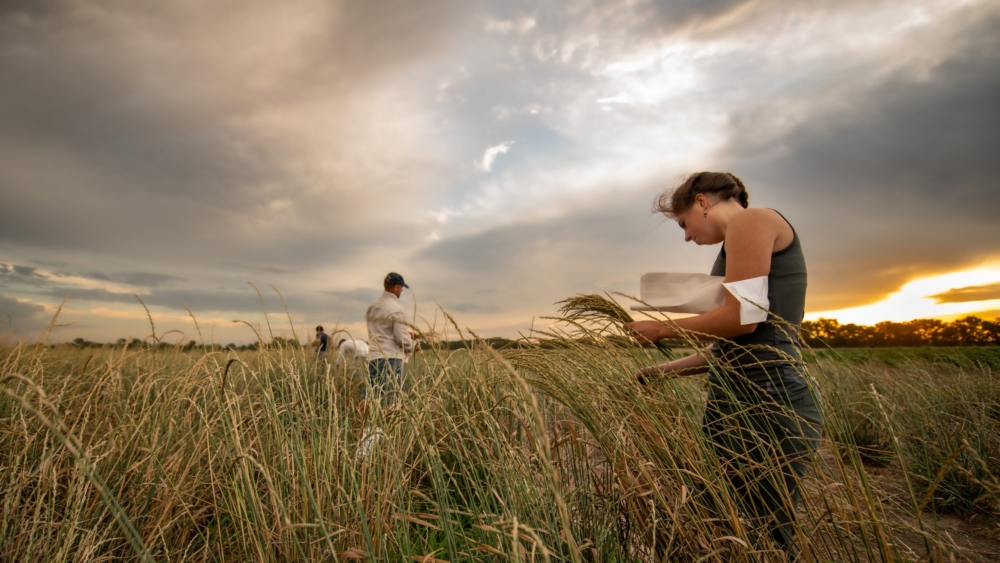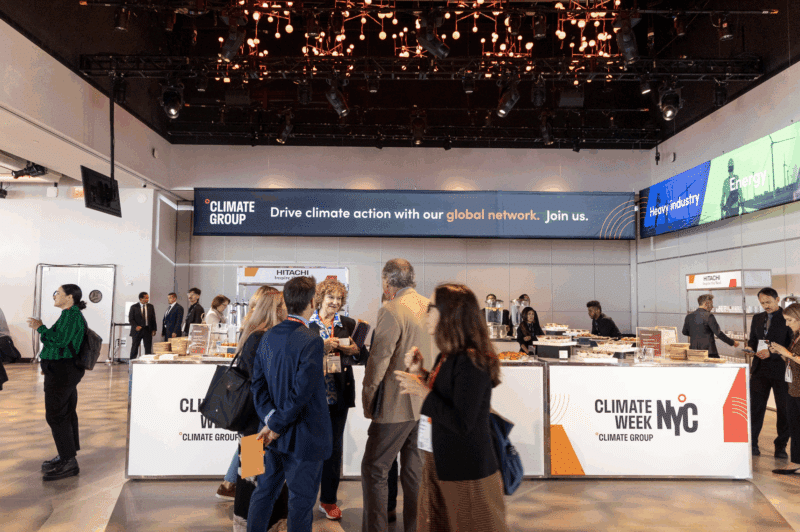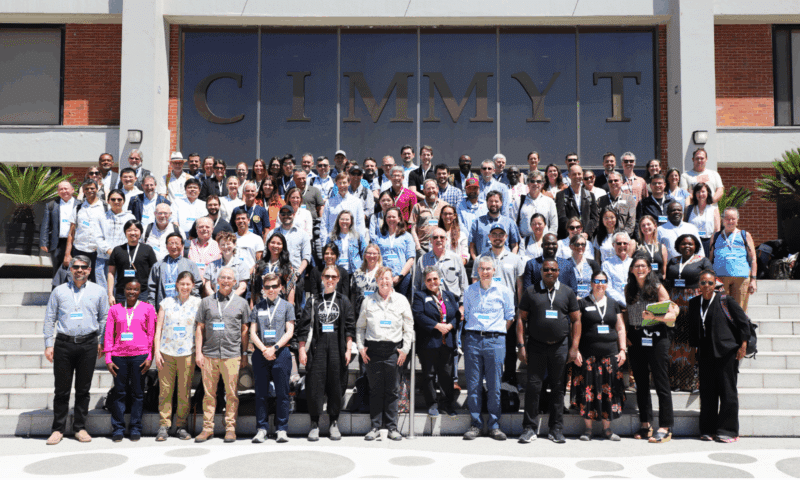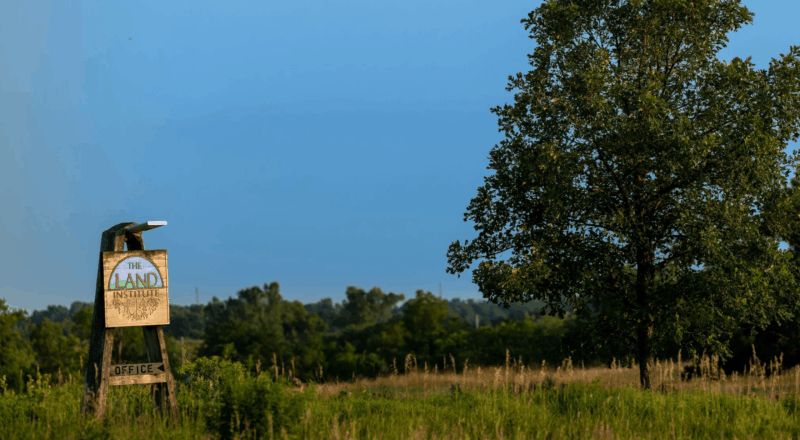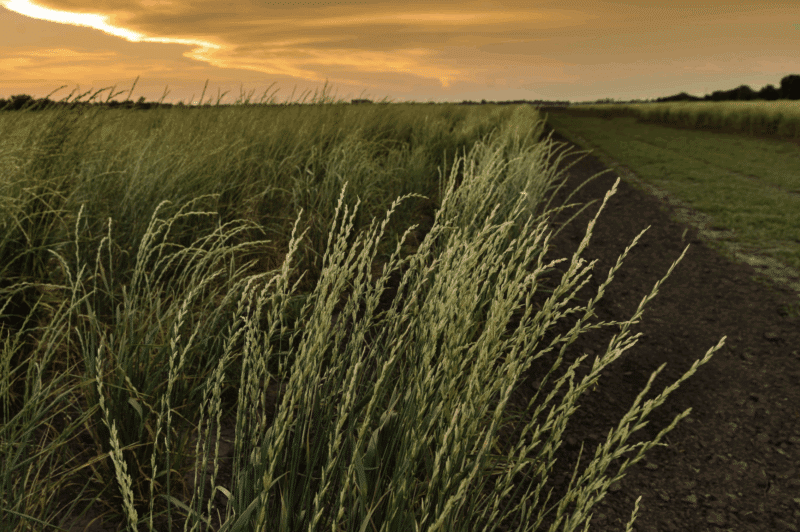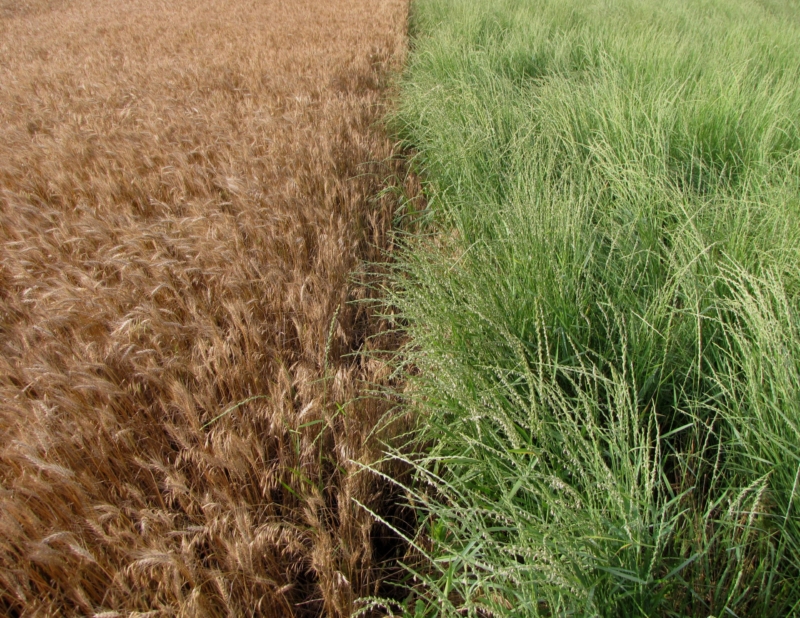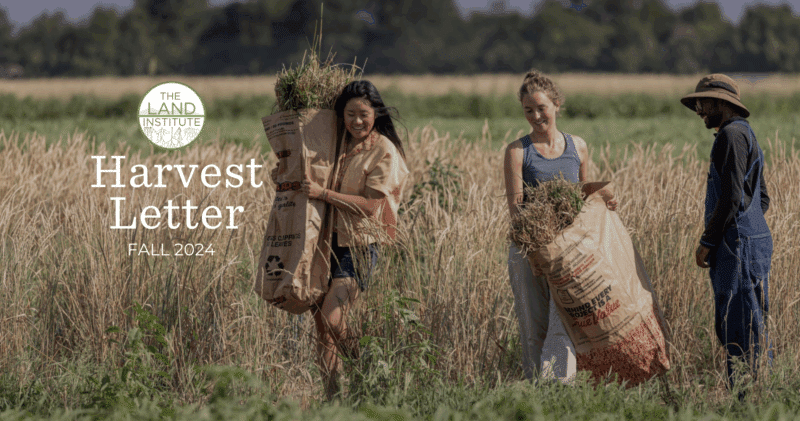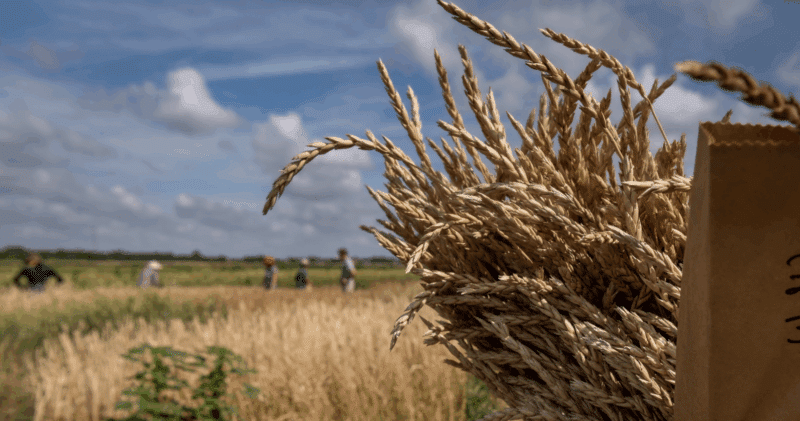Autumn 2019
Dear Friends,
This week temperatures in Central Kansas are expected to plunge into the teens. I am always amazed at how quickly my memory of summer fades in the face of freezing fall temperatures. While July was the hottest month ever recorded for the whole planet, this summer was cooler than usual on the Great Plains, partly because rain fell almost every week. In fact, May was the rainiest month ever recorded in Kansas. It’s gotten to the point where the toppling of major climate records barely raises an eyebrow. The predictions of hotter temperatures and more intense and erratic storms and droughts are playing out all around the world—and in many cases ahead of schedule.
As these October days grow colder, the fields of perennial crops around The Land Institute have nearly ceased growing aboveground. Plants have already prepared for winter by moving carbon and nitrogen containing compounds from their leaves down into their crowns, just below the soil surface, where they are stored until needed to produce next spring’s growth. In order to avoid raiding the carbon and nitrogen in their pantry over the winter, perennial plants will typically allow a good portion of their fine roots to die off. This “turnover” of fine roots is one way that perennial species contribute to the build-up of soil carbon. Another way is that during the growing season, active plant roots exude carbon-rich compounds into the soil which supply food to a dizzyingly large and complicated food web of soil microbes. Populations of microbes explode and die off over and over again, leaving behind trillions of microbial corpses. Strange as it may sound, the organic compounds associated with dead microbes are known to adhere to the surfaces of soil particles and become incorporated into clods or aggregates of soil. This type of organic matter tends to stay around for a long time, even hundreds of years, if the soil is left undisturbed.
Over the last 10,000 years, as natural ecosystems have been converted to agroecosystems for growing annual crops like wheat, rice, and corn, we unintentionally, but universally caused soil carbon levels to drop by 20-70%, depending on climate, soil type, and a few other factors. This decline is mainly driven by 1) replacing perennial vegetation that maintains huge root systems with annuals that have much smaller root systems, and 2) tillage that breaks open soil aggregates exposing banks of stable carbon to microbial attack. Microbes feast on the newly exposed carbon and subsequently breathe out CO2. Researchers Tom DeLuca and Catherine Zabinski have estimated that between 1870 and 1900, the amount of carbon lost to the atmosphere when prairies across the Midwest, US were converted to annual croplands was similar to the loss of carbon associated with deforestation of the Amazon over the last several decades.
Recently, there has been a great deal of interest in re-capturing lost soil carbon to help mitigate climate change. But there is considerable controversy about how much soil carbon can be captured when certain farming practices (often termed regenerative) are adopted, such as rotational grazing, the inclusion of cover crops, or no-till management. What is clear is that the most robust approach for re-capturing the levels of soil carbon that existed in the natural ecosystems that preceded agriculture is to design an agriculture that resembles those natural ecosystems. Perenniality and diversity are defining attributes of virtually all natural ecosystems, and key to how they build soil carbon. Using state-of-the-art eddy covariance towers, post-doctoral researcher Gabriel de Oliveira and his advisor Nate Brunsell of the University of Kansas have shown that, as predicted, Kernza® fields are soaking up far more carbon than they are giving off. And that soil organic matter does not just store carbon, it contributes to many aspects of soil health and plant vitality.
As climate records continue to be broken on a monthly basis, there are some reasons to be hopeful. One is knowing that perennial polyculture research is expanding and accelerating. With each new field planted on a farm or research station, the legacy of carbon loss from soils is reversed. Does this work need to expand and accelerate more? Positively. Will it on its own take care of climate change? No. It is crucial that we address greenhouse gas emissions from fossil fuels, but CO2 drawdown by perennial polycultures will provide a much-needed buffer in helping to keep our one Earth livable. We invite you to join us on this journey of hope, rooted in science.
With best wishes,
Tim Crews, Ph.D., Director of Research
Download PDF here.


